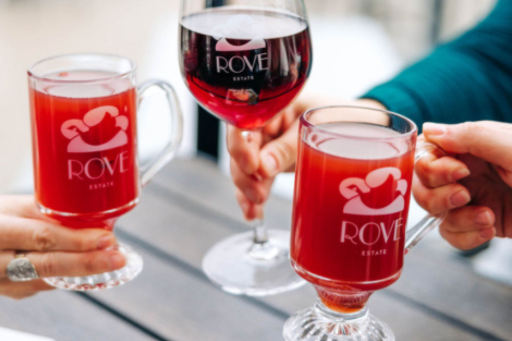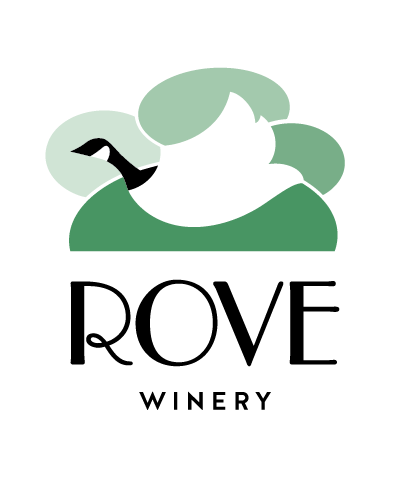
Nothing says fall like carving pumpkins, leaves changing colors, and a glass of cider. As you pull out your fall boots and wool scarves, a warm cup of hot cider in your hands can be just what you need to take the chill off.
So as you prepare for a season of corn mazes, apple cider donuts, and leaf peeping, let’s dive into all things cider.
Cider’s Origin & History
The first recorded reference to cider was when Julius Caesar first attempted to invade Britain in 55 BCE. Though his campaign was unsuccessful (this time), he brought back the fermented drink of apple cider and spread its knowledge throughout the European continent. To make this new drink, the ancient Romans reworked olive presses into apple presses – making it the first of its kind.
Cider’s popularity grew and followed European immigrants to America. Often drinking cider was a lot safer to drink than water, so both the pilgrims and Founding Fathers made it a drink of choice. And since grain and wheat crops were struggling and apple orchards were thriving, making cider was a lot easier (and less expensive) than beer during this time. Cider stayed popular in America until the 1800s.
But cider is still a popular drink in Europe. Just don’t call it “hard” cider while you’re there. Hard cider is something Americans say when distinguishing between alcoholic and non-alcoholic cider – for Europeans, it’s just cider.
Cider’s Characteristics
Cider is originally made from apples – from crabapples to special heritage apples. But you can now find ciders made from pears, pumpkins, honey, and cherries (to name a few)! What’s most important in a cider is the fruit – the fruit in cider matters just like the grapes in wine. So if you want a tasty, flavorful cider, find one made with good fruit.
The beauty of cider is that it has a range of flavors and aromas like wine – it will have its own unique flavor notes and characteristics since the fruit harvested will take on the characteristics of the land it’s grown on (like you find with wine grapes). Depending on the type of cider, it can be high or low in acidity, contain high or low tannins, and range from dry to sweet. And you can enjoy cider either sparkling or still, alcoholic or non-alcoholic.
Color: Depending on the fruit used, cider can range in color from pale yellow to medium yellow, light gold to deep gold, amber, or even red.
Flavors: The fruit of the cider will inform the flavors, but the flavor can be fresh, crisp, and tangy to earthy and bold or sweet and light.
Aroma: The aroma will be fruit-forward and take on the notes of the fruit used in the cider.
Cider Food Pairings
Cider is a versatile drink pairing well with a variety of foods. With your next glass of cider, try it with chicken, pork, salad, seafood, or pizza. If you’re having cider with your entrée, opt for a drier cider and keep the sweet cider as an apéritif or with dessert.
Try Rove Estate’s Hot Harvest Cider Recipe!
Our hot mulled cider is delicious and a fan favorite at the farm. But if you can’t make it out to the farm, try our hot cider recipe at home! Our exclusive recipe uses apple cider and Rove Estate Cherry Cider. Our cherry cider is dry but fruit-forward and the perfect combination of sweet and tart.
HOT HARVEST CIDER:
Ingredients:
- 1 howler of Rove Estate Cherry Cider or other dry cherry cider
- 1 quart of apple cider
- 4 cinnamon sticks
- Warming spices (we use clove, nutmeg, & cinnamon)
- A splash of red wine (we like our Merlot, but any fruit-forward dry red will work)
Directions:
- Add Rove Estate Cherry Cider and apple cider in a crockpot with cinnamon sticks.
- Put about a teaspoon of each warming spice in a coffee filter (tied shut with a rubber band or string) and add to the cider mixture.
- Heat mixture on high until hot (typically 45 minutes).
- Serve hot in a coffee mug with 2 oz of red wine poured on top.
- Pro Tip: Add a shot of your favorite bourbon or whiskey (our favorite is Traverse City Whiskey).
And when you take a sip of your mulled cider, know we’re clinking glasses with you from Leelanau Peninsula, Michigan. Sláinte!
If you’d like to learn about our wines, check out our essential wine guides on Riesling, Rosé, and Pinot Noir. We also have a delicious Fall Wine and Food Pairing Guide to help plan your next fall gathering.



